| | The Throne of King Solommon | A Unique Piece of Art by Aaron Chait, Folk Artists of the Beginning of the 20th Century Kelme
|
For long time this unique piece of art, having no analogue in the history of Jewish art, – “The Throne of King Salomon”, created by Aaron Chait in Kelme in the beginning of the 20th century – was not known, although its constituent elements - wooden carvings, metal candle-stick, and puppets – were kept in the Vilna Gaon State Jewish Museum for a few years. |
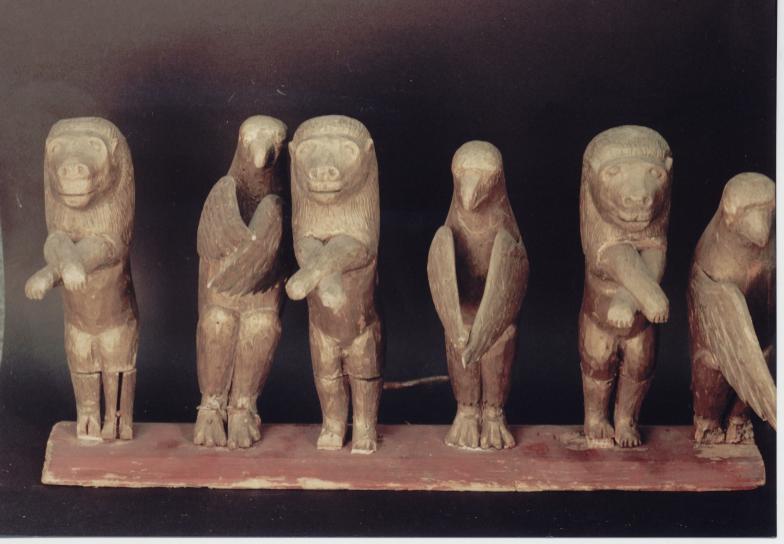 |
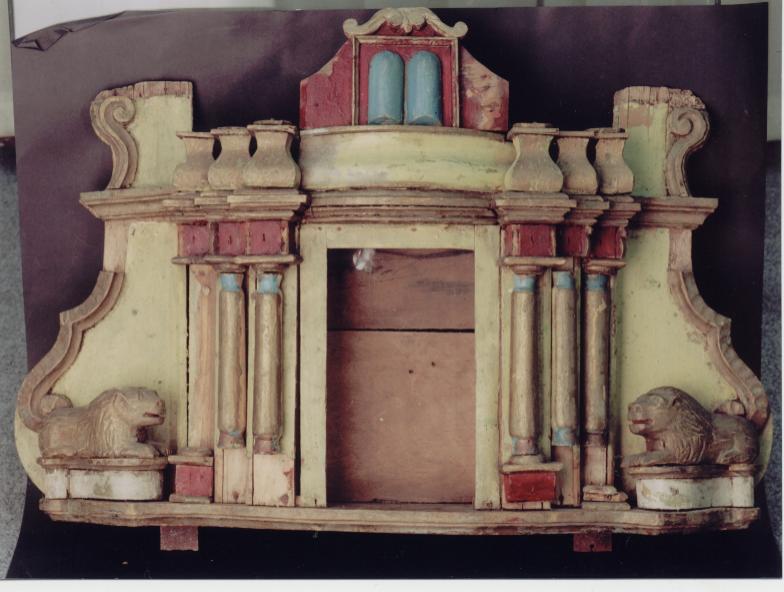 |
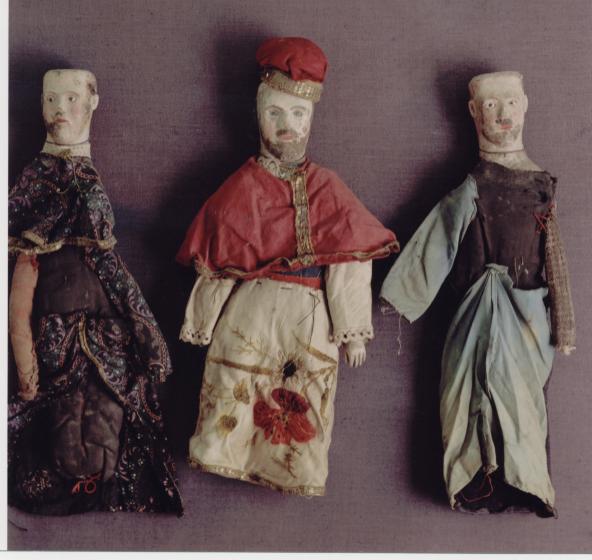 |
This original work of art was preserved by Professor Paulius Galaunė, who, in 1941, among other exhibits rescued the wooden carvings, the puppets, and the metal candle-stick from the Jewish Ethnographic Museum, which functioned in Kaunas before World War II. After the war, the exhibits were kept in M. K. Čiurlionis Museum of Art in Kaunas, where nobody knew what these objects are and what is their purpose, because no records were left in the Jewish Ethnographic Museum. Later, in 1989, these invaluable exhibits were donated to the newly established State Jewish Museum (in 1997 renamed to The Vilna Gaon State Jewish Museum). |
|
Because of their untypicalness and unusualness in the context of the traditional Jewish art, these exhibits were misidentified: the puppets and the carvings, parts of one entirety, were considered to be two separate works of Jewish folk art, and so the constituent elements of one composition were divided into two separate groups. A few years after this misidentification, the works were exhibited in The Vilna Gaon State Jewish Museum as puppets of Purim-shpil and as decorative composition of Aron ha-Kodesh.
Recently, after a thorough analysis of these works it was established that in fact they are elements of a single composition, single indivisible piece of art, and both its plot and its author were identified as well. Explaining the plot of the work was aided by the main sources of the traditional Jewish art: Biblical texts and commentaries on the texts – aggadic literature, and description of the Salomon’s Throne in the Second Targum in particular. Attribution of the work was possible thanks to a memoir source – memoirs of Jaakov Chait, the son of Aaron Chait. |
 |
 |
It turned out, that the wooden carvings, the puppets, and the metal candle-stick are elements of a single piece of art, called the King’s Salomon Throne, according to the story of Salomon’s Trial, and it was created by a Jewish folk artist from Kelmė Aaraon Chait in the beginning of the 20th century.
The Salomon’s Throne is a grandiose spatial composition, consisting of many elements (carvings and puppets); in a way it is a model of the hall or palace of the Salomon’s Throne, created by Aaron Chait according to the description of the Throne in the Second Targum. |
|

|
The greater part of the Salomon’s Throne’s main carvings survives: the throne, flowers “growing” behind the throne, fifteen-branch candle-stick, which adorned the top of the throne, the main sculptural compositions of animals (various animals lying on stairs, and compositions of eagles-lions with extended wings and paws), some architectural motifs of the palace, etc.
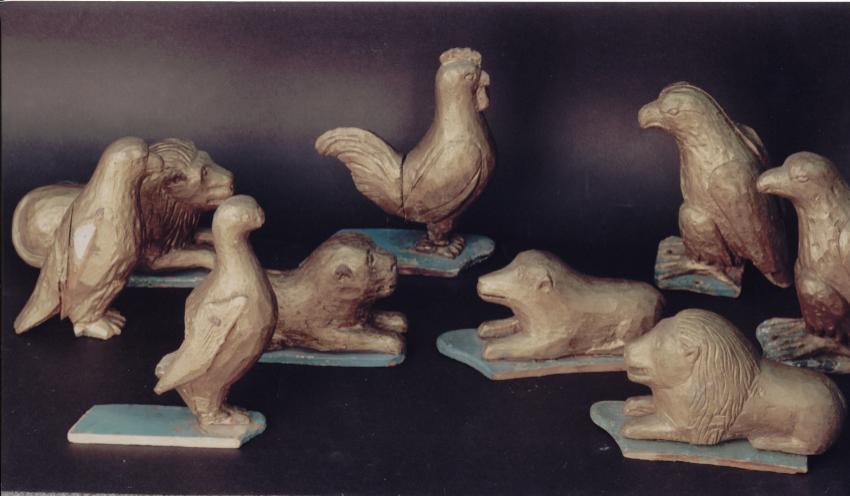 |
| Very few puppets have survived – of approximately two hundred puppets we have only twenty three, but these include the greatest part of the main heroes of the Salomon’s Throne story: the High Priest, his assistant, seventeen members of the Sanhedrin, |
 |
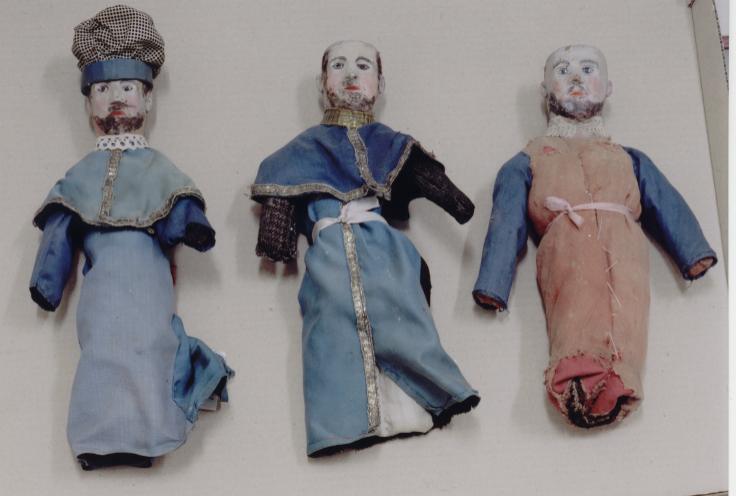 |
|
also half of the participants of the Salomon’s trial: a woman, a child, and a soldier, holding the child by his foot and ready to execute the sentence. |
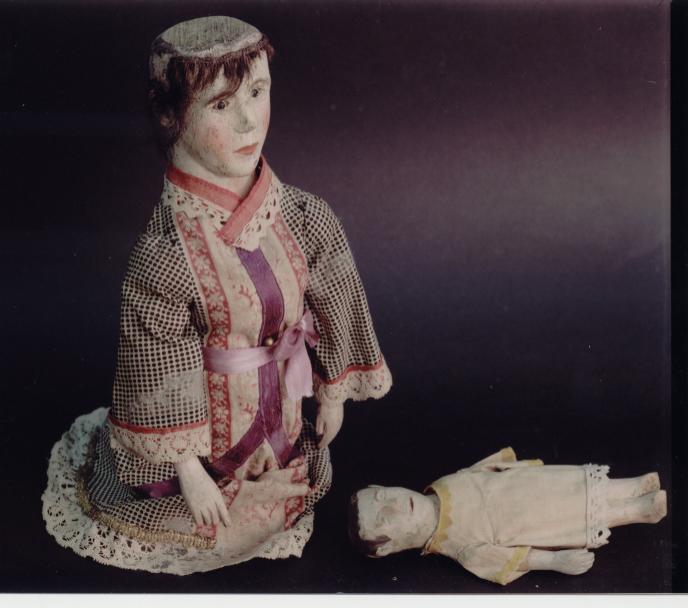 |
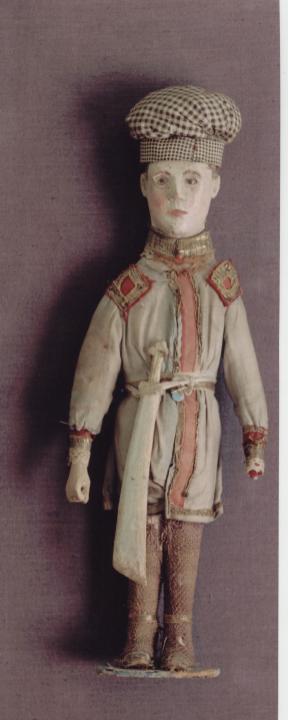 |
|
Unfortunately, we do not have the king Salomon himself, the second woman, the second child, many of the soldiers, and a great part of the members of the Sanhedrin.
Almost a century after the creation of the Salomon’s Throne it turned out that this unique piece of art, searched by the son of the artist even in New York Metropolitan Museum (as he says in his memoirs), in fact still is in Lithuania, in The Vilna Gaon Jewish State Museum. |
|
By an employee of The Vilna Gaon State Jewish Museum
Aiste Niunkaite-Račiuniene
Photographer P. Račiūnas |
| | Modified: 1/3/2007 1 |
|
| | | | | Information | | 2017.03.01 | |
|
If you want to order a guided tour or educational programme please contact us in advance:
tel. +370 60163612,
email: muziejus@jmuseum.lt
***
If you want to order an educational programme, please contact us at: +370 5 212 0112,
+370 6 8986 191 or via email muziejus@jmuseum.lt
***
Tolerance Center
(Naugarduko St. 10/2)
working hours:
Monday,Thursday: 10:00-18:00
Tuesday, Wednesday: 10:00-18:00
Friday: 10:00-16:00
Saturday-closed,
Sunday: 10:00-16:00
***
Holocaust Exposition
(Pamėnkalnio St. 12)
working hours:
Monday-Thursday: 9:00-17:00
Friday: 9:00-16:00
Saturday-closed
Sunday: 10:00-16:00
***
Memorial Museum of Paneriai
(Agrastų St. 15, Aukštieji Paneriai)
working hours:
Monday-closed
Tuesday–Sunday 9:00-17:00
From October until May the Memorial Museum is open by appointment only.
If you are interested in visiting the museum/the memorial with a tour guide, please contact us at least a day in advance at
+370 699 90 384 or via email mantas.siksnianas@jmuseum.lt
***
|
|
| | | | | | |  | |  |
|


